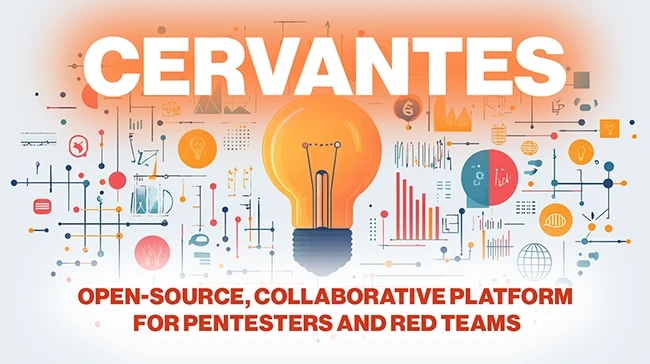Cervantes: Open-source, collaborative platform for pentesters and red teams
Cervantes is an open-source collaborative platform built for pentesters and red teams. It offers a centralized workspace to manage projects, clients, vulnerabilities, and reports, all in one place. By streamlining data organization and team coordination, it helps reduce the time and complexity involved in planning and executing penetration tests.

As an open-source solution under the OWASP umbrella, it understands the specific needs of penetration testers from managing targets to organizing vulnerabilities, proof-of-concepts and remediation recommendations.
“Unlike many security tools where collaboration feels like an afterthought, Cervantes is designed from the ground up as a collaborative platform. Multiple pentesters can work simultaneously on the same project, sharing findings, notes, and evidence in real-time. This eliminates the common problem of siloed work where team members duplicate efforts or miss critical vulnerabilities,” Ruben Mesquida, the developer of Cervantes, told Help Net Security.
Cervantes includes an integrated knowledge base system that allows teams to build and maintain their own security methodologies, vulnerability definitions, and remediation guidelines. It also supports multiple languages.
“The platform includes AI-powered vulnerability generation that helps teams identify and document findings more efficiently, automated executive summary generation that creates comprehensive project overviews, and an intelligent chat system with project context that allows team members to query project data conversationally. This AI integration streamlines workflow and reduces manual documentation burden while maintaining accuracy,” Mesquida explains.
Cervantes integrates with JIRA for organizations that require formal issue tracking and remediation workflows. Vulnerabilities can be automatically exported as JIRA tickets with full context, enabling smooth handoffs between security teams and development teams.
The platform also features a modular reporting system that allows teams to build custom reports by combining different components (executive summary, technical findings, remediation roadmap, compliance sections, etc.).
Future plans and download
Mesquida told us that the roadmap for Cervantes focuses on enhancing functionality and user experience based on community feedback:
Enhanced tool integration: Deeper integrations with security tools like Burp Suite, ZAP, Nessus, etc. This will allow for automatic import of findings and reduce manual data entry, letting pentesters focus on analysis rather than documentation.
Advanced modular reporting engine: Future versions will include more sophisticated reporting capabilities with a modular component system that allows teams to build custom reports by combining different sections (executive summary, technical findings, remediation roadmap, etc.). This flexibility enables customizable templates for different audiences and compliance frameworks.
AI-powered assistance: Integration of AI capabilities to help with vulnerability classification, risk assessment, and even suggestion of remediation strategies based on historical data and industry best practices. Mesquida is also developing a Model Context Protocol (MCP) server that will enable seamless integration with various AI models and assistants, allowing for even more sophisticated automation and analysis capabilities.
Adaptive team configuration: Adaptive configurations that allow different types of security teams to customize Cervantes for their specific workflows. Whether you’re a small boutique pentesting firm, an internal red team, a bug bounty hunter, or a large consulting organization,
Enterprise features: For larger organizations, Mesquida is adding features like integration with enterprise identity providers (OpenIdConnect, LDAP, Active Directory).
“Looking beyond the immediate roadmap, our long-term vision is to evolve Cervantes into a comprehensive security operations platform. This would include Cyber Threat Intelligence (CTI) capabilities for threat hunting and attribution, Blue Team defensive modules for incident response and security monitoring, and integrated compliance management tools. The goal is to create a unified platform where red teams, blue teams, and compliance officers can collaborate seamlessly, sharing intelligence and maintaining a holistic view of an organization’s security posture,” Mesquida concluded.
Cervantes is available for free on GitHub.

Must read:
- 35 open-source security tools to power your red team, SOC, and cloud security
- GitHub CISO on security strategy and collaborating with the open-source community

Subscribe to the Help Net Security ad-free monthly newsletter to stay informed on the essential open-source cybersecurity tools. Subscribe here!
